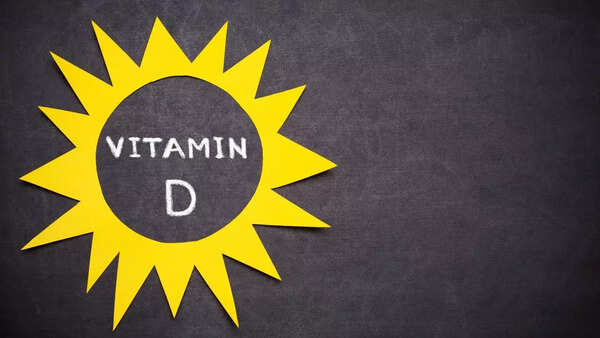Vitamin D, often called the "sunshine vitamin," is produced in the skin when exposed to sunlight. It's essential for bone health and immune function, playing a key role in development and maintaining a healthy nervous system and muscles. Despite its importance, Vitamin D deficiency is a widespread issue, impacting a significant portion of the global population.

What is Vitamin D Deficiency?
Vitamin D deficiency occurs when the body doesn't have enough Vitamin D. This can primarily affect bones and muscles. According to the Cleveland Clinic, it's a global health concern, affecting approximately one billion people worldwide, with 50% experiencing insufficiency. In the United States, about 35% of adults are deficient.
Vitamin D can be obtained from three main sources:
Who is at Risk?
Certain groups face a higher risk of Vitamin D deficiency:

Why is Vitamin D Important?
Vitamin D is crucial for maintaining calcium balance in the blood and bones, which is important for building and maintaining strong bones. It allows the body to use calcium and phosphorus to support bone health and healthy tissues.
A severe deficiency can lead to impaired calcium and phosphorus absorption, potentially causing hypocalcemia (low calcium levels). This can trigger secondary hyperparathyroidism, where the parathyroid glands overproduce hormones to normalize calcium levels.
Untreated, hypocalcemia and hyperparathyroidism can cause:
The body may compensate for low blood calcium by taking calcium from the bones, leading to bone demineralization. This can cause osteomalacia (softening of the bones) in adults and rickets in children, increasing the risk of fractures. In children, rickets can cause bowed or bent bones.
Signs and Symptoms of Vitamin D Deficiency
According to the Cleveland Clinic, symptoms include:
In children:
In adults:
However, it's important to note that many people with Vitamin D deficiency experience no noticeable symptoms.
What Causes Vitamin D Deficiency?
Deficiency primarily arises from:
Specific causes can include:
Biological and environmental factors like older age and higher melanin levels can also increase the risk.
How to Prevent Vitamin D Deficiency
Ensure adequate Vitamin D intake through a balanced diet and sun exposure, while also protecting against skin cancer. Balancing sun exposure with sunscreen use is important. Daily Vitamin D needs vary by age.
Foods that naturally contain some Vitamin D include:

Foods often fortified with Vitamin D:
Multivitamins and Vitamin D supplements are widely available. Consult a healthcare provider before taking any new supplements.
Risk Factors of Vitamin D Deficiency
Possible complications of Vitamin D deficiency include:
Untreated rickets can lead to:
Fortunately, these conditions are treatable with early intervention to prevent long-term consequences.
How to Treat Vitamin D Deficiency
The goal of treatment and prevention is to achieve and maintain adequate Vitamin D levels. This can be achieved through:
Newer articles
Older articles
 Esha Gupta Sets Record Straight: Actress Addresses Hardik Pandya Dating Rumors
Esha Gupta Sets Record Straight: Actress Addresses Hardik Pandya Dating Rumors
 Google Maps to Boost Navigation Accuracy with Fused Orientation Provider API
Google Maps to Boost Navigation Accuracy with Fused Orientation Provider API
 Global Vaccination Rates Plunge: Millions of Children Now Vulnerable to Preventable Diseases
Global Vaccination Rates Plunge: Millions of Children Now Vulnerable to Preventable Diseases
 Rishabh Pant: Greg Chappell Hails India Star as Cricket Revolutionary
Rishabh Pant: Greg Chappell Hails India Star as Cricket Revolutionary
 Skin Cancer Alert: How to Identify Suspicious Moles and Early Warning Signs
Skin Cancer Alert: How to Identify Suspicious Moles and Early Warning Signs
 Gavaskar Calls for Kuldeep Yadav's Inclusion in Second Test Amid Bumrah Fitness Concerns
Gavaskar Calls for Kuldeep Yadav's Inclusion in Second Test Amid Bumrah Fitness Concerns
 Is Daily Pooping a Must? Understanding Bowel Regularity and When to Worry
Is Daily Pooping a Must? Understanding Bowel Regularity and When to Worry
 Suryakumar Yadav's Sports Hernia: Understanding the Injury, Recovery, and Risk Factors for Athletes
Suryakumar Yadav's Sports Hernia: Understanding the Injury, Recovery, and Risk Factors for Athletes
 Vijay Sethupathi Apologizes Amid Controversy Over Son Surya's Debut Film 'Phoenix' and Alleged Video Removal Pressure
Vijay Sethupathi Apologizes Amid Controversy Over Son Surya's Debut Film 'Phoenix' and Alleged Video Removal Pressure
 Install Baccarat Hack Tool: The Secret to Winning
Install Baccarat Hack Tool: The Secret to Winning